Young beekeeper Jack Geraghty along with beekeeping mentor Dennis Hertzog raised a batch of queens over the course of July 2021, experimenting with a new way of making increase for young beekeepers. They started by creating a strong, queenless starter colony full of nurse bees housed in a medium nuc (photo 1)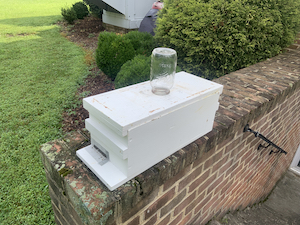 , into which they then placed a grafting frame holding 14 wax queen cups, which had previously each had a young larva grafted inside. The starter hive was left undisturbed for 24 hours during which the nurse bees began the process of turning the larvae into queens by building out the wax cells and filling the cups with large amounts of royal jelly (photo 2)
, into which they then placed a grafting frame holding 14 wax queen cups, which had previously each had a young larva grafted inside. The starter hive was left undisturbed for 24 hours during which the nurse bees began the process of turning the larvae into queens by building out the wax cells and filling the cups with large amounts of royal jelly (photo 2) 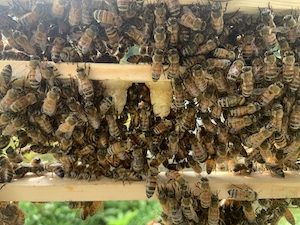 .
.
After 24 hours, the grafting frame with young larval queens was then placed above a queen excluder in a finisher hive. A finisher hive is comprised of a strong colony with older capped brood and queen placed below an excluder in the bottom two brood boxes, and young uncapped brood placed above the excluder in the top box. The capped queen cells were then left in the finisher until capped (6 days) (photo 3) 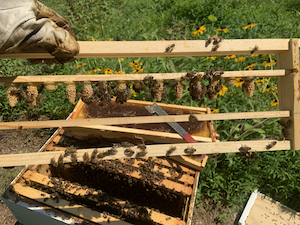 , after which they were separated and each put into a mating nuc (photo 4,5, and 6)
, after which they were separated and each put into a mating nuc (photo 4,5, and 6) 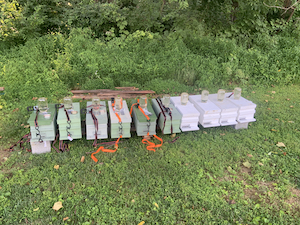
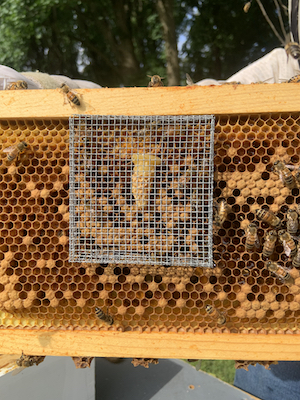
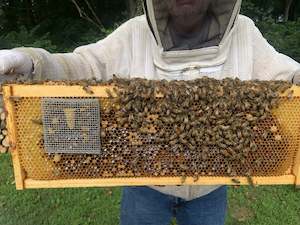 . After 9 days the queens had emerged and were released from their cages to begin their mating flights (photo 7)
. After 9 days the queens had emerged and were released from their cages to begin their mating flights (photo 7) 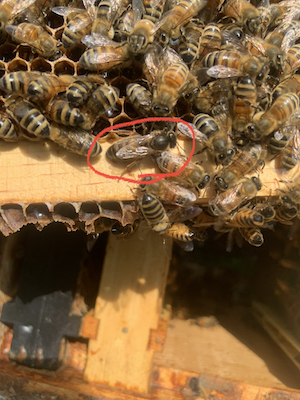 . Of the 14 queen cups grafted, 11 were accepted, built out, and capped. Of those 11 queens, the 10 largest were chosen to be put into mating nucs.
. Of the 14 queen cups grafted, 11 were accepted, built out, and capped. Of those 11 queens, the 10 largest were chosen to be put into mating nucs.
This project served as an experiment to learn about and practice queen rearing, and was the first successful attempt at raising queens for the Young Beekeepers Program, with two previous attempts being unsuccessful. We hope to use what we have learned to rear queens in the future, which will hopefully be used to create hives for current and future young beekeepers.